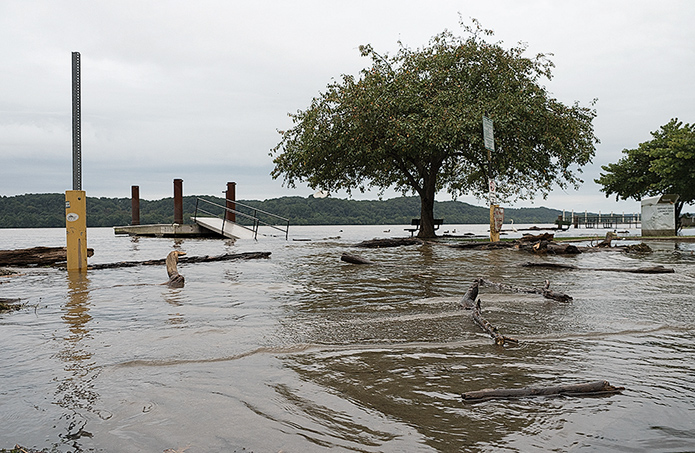By Karl Blankenship
Bay Journal
The Bay continued to be on the receiving end of high river flows in July. The flows have been higher than normal for 13 out of the last 15 months, according to data from the U.S. Geological Survey.
The pollution carried into the Bay during that span has led to worse than normal water quality and last month triggered a large oxygen-starved “dead zone” in the Bay.
In July, the USGS reported that the estimated cumulative flow into the Bay from its nine largest rivers — which account for more than 95% of the freshwater entering the Bay — averaged 54,000 cubic feet per second. That was the 15th highest flow on record for the month since the agency began tracking river flows into the Bay in 1936.
So far this year, the flows were above normal in five of the first seven months of the year. That followed an eight-month period from May through December last year when flows were above normal every month.
The USGS considers a flow to be above normal if it is among the top 25% for a given month.
The data is available on a new USGS web page.
High freshwater flows are typically bad news for Bay water quality because they carry large amounts of water-fouling nutrients and sediments, which are flushed off the landscape and into the Chesapeake.
In the Bay, nutrients fuel algae blooms that cloud the water. As the blooms die and decompose, they are consumed by bacteria in a process that depletes water of oxygen. Sediment also clouds the water and smothers bottom habitats.
Scientists have been worried that the protracted period of high flows will lead to a decline in underwater grass beds, which need sunlight to survive. Earlier this year they predicted that the huge influx of nutrients would lead to a greatly expanded dead zone.
Indeed, the Maryland Department of Natural Resources reported that the area of low oxygen, or hypoxic, water was significantly worse than average during its two July water quality monitoring surveys.
In early July, the DNR reported a dead zone of 1.92 cubic miles in the Maryland portion of the Bay, compared with an average of 1.36 cubic miles. In late July, scientists found 2.01 cubic miles of low-oxygen water, compared with the late July average of 1.34 cubic miles.
Along with pollution, high flows added a surge of freshwater to the Bay that kept salinity low near the surface, causing strong stratification between the surface and higher salinity bottom waters. That essentially traps oxygen-starved water on the bottom and prevents it from mixing with the oxygen-rich surface.
DNR scientists said conditions also were aggravated by temperatures that warmed Bay waters to nearly 90 degrees. Warmer water holds less oxygen than cool water.
The department’s monitoring reports are available here.




Recent Comments